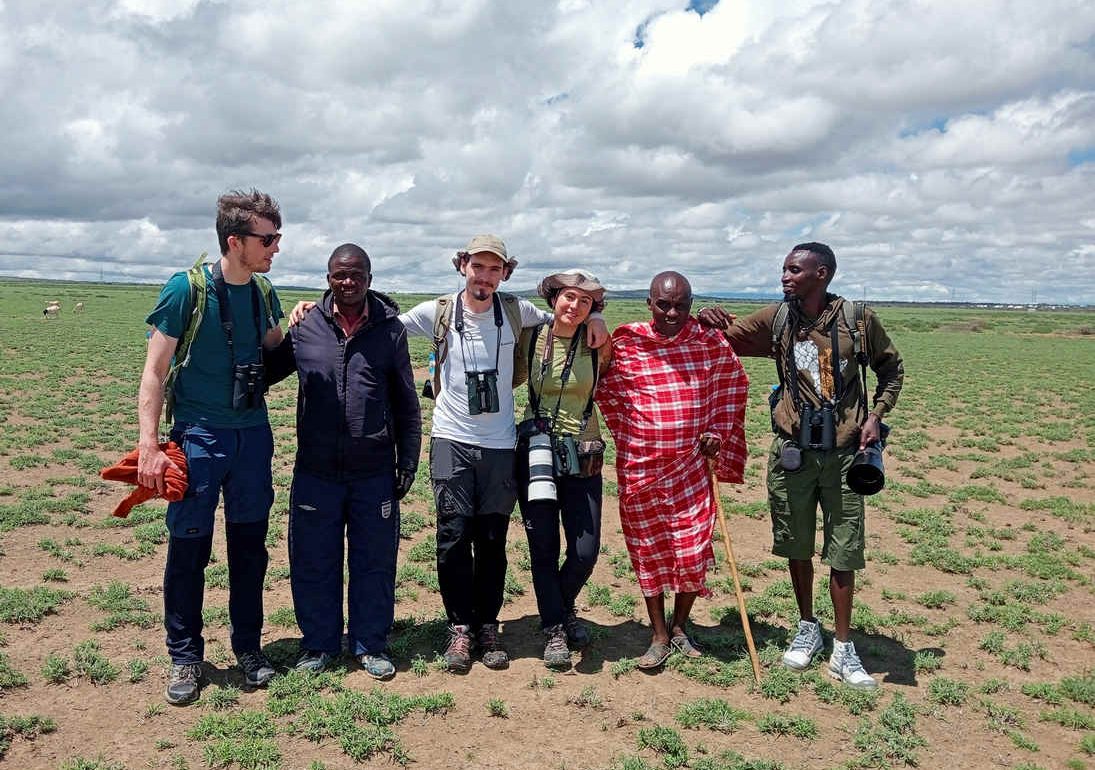
What is your favorite bird species?
My favourite species is the Spotted Palm Thrush (Cichladusa gutata), a very sweet songster and a mimic
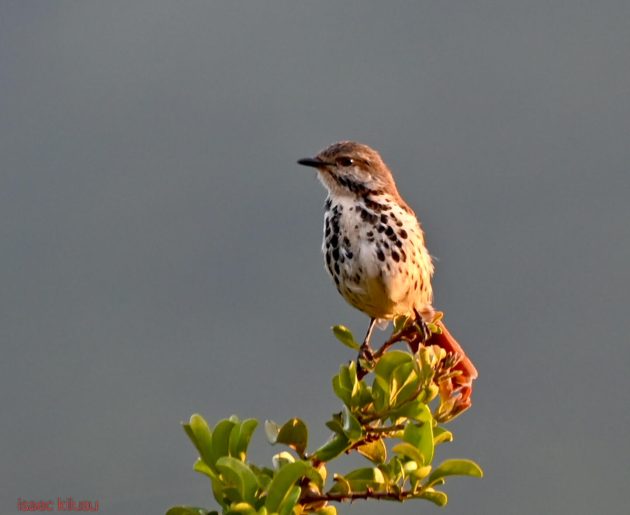
What is your name, and where do you live?
I am Isaac Kilusu from Arusha, Tanzania
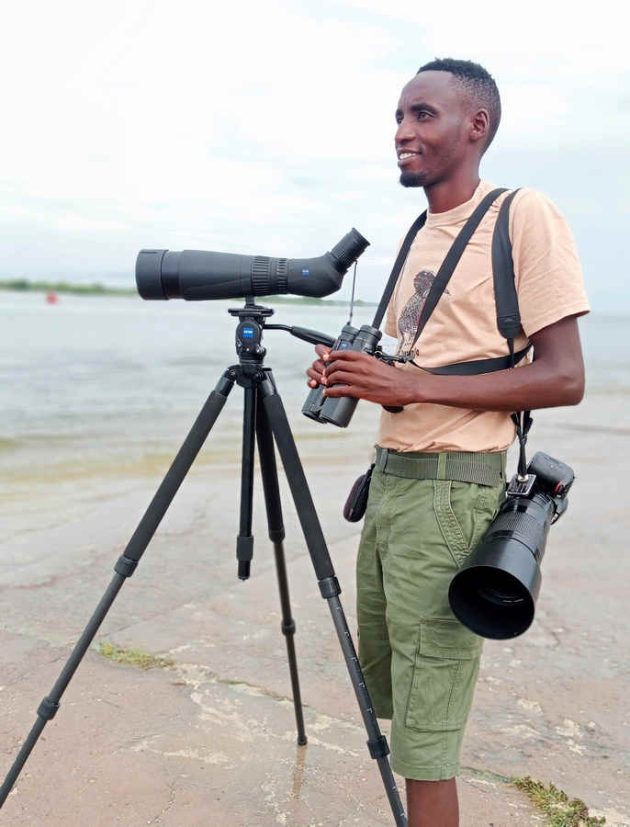
What are the main regions or locations you cover as a bird guide?
All of Tanzania and Kenya
African Paradise Flycatcher
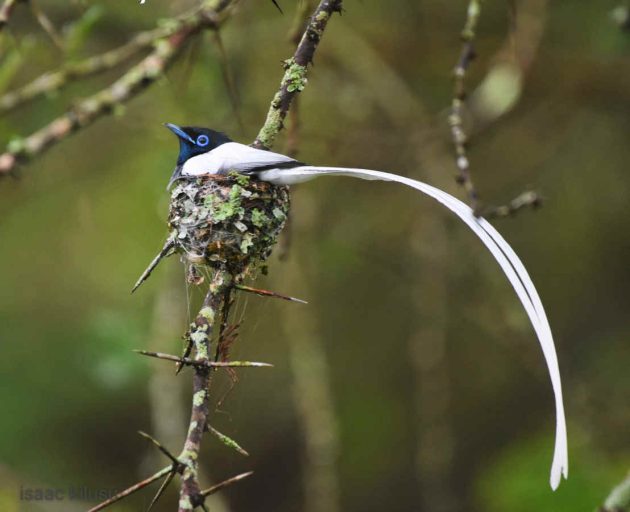
How long have you been a bird guide?
For 13 years now
Pearl-spotted Owlet
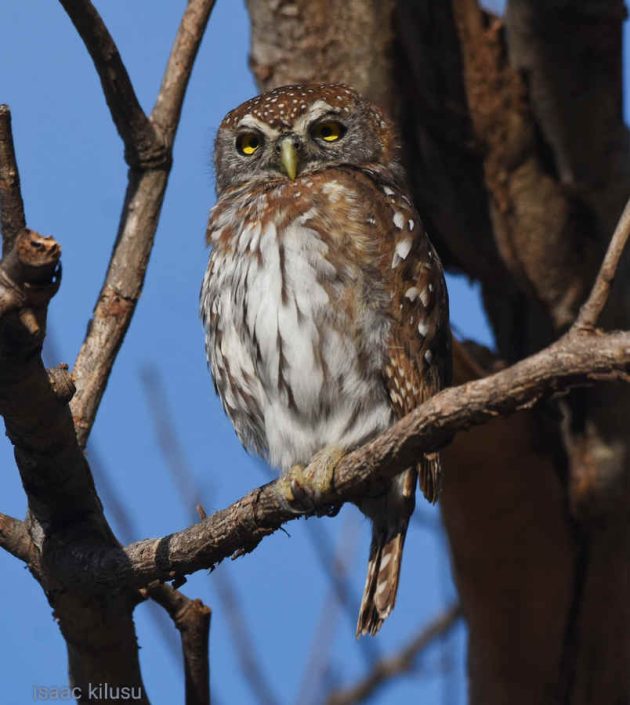
How did you get into bird guiding?
It began as a childhood game back in the village where we the boys used to go out in the woods to search for birds’ nest as a game, so once you see one nest you find the rest of the boys and you show them that this nest is yours, so no one will touch it or claim it. Your work will now be to monitor the nest until the chicks fly. Sometimes we attached a string on the bird’s legs, especially doves, to see if we could see them in the future when they fly out. Sadly, we never saw them, maybe the dispersal point was too far
White-crested Helmet-shrike
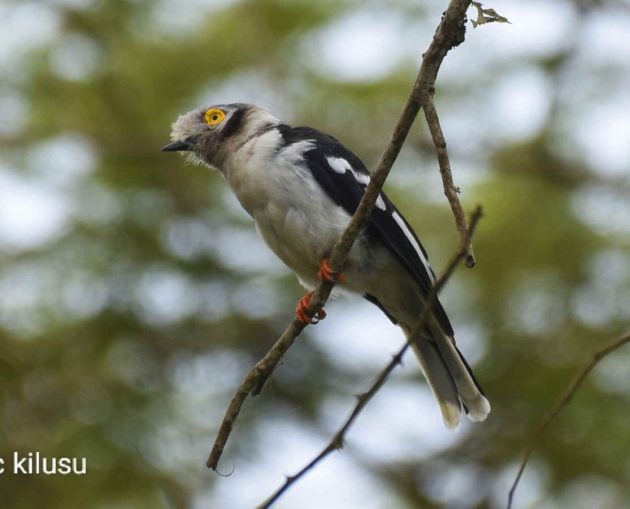
What are the aspects of being a bird guide that you like best? Which aspects do you dislike most?
What I like most is showing the people/guests the beauty of my country, the people, the breathtaking landscapes, and the joys of birding. What I dislike is when I am on a game drive in places like the Serengetis and am watching a special bird and other guides (specializing in big fivers) pass by and ask “What are you looking at”, and I answer birds and their response makes gives me the impression birds are ordinary to them. Birding is a special hobby, I should say.
Grey-headed Kingfisher
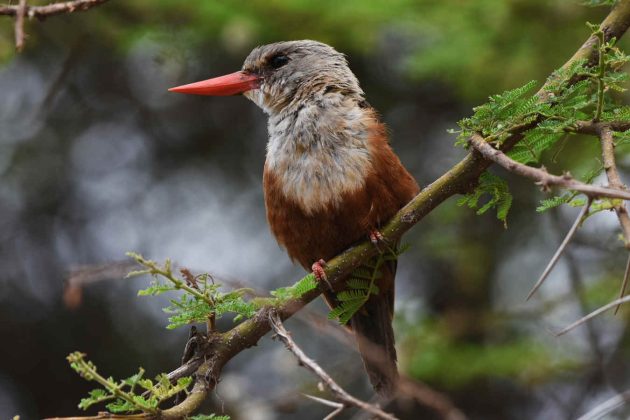
What are the top 5-10 birds in your region that are the most interesting for visiting
birders?
- Spotted Palm Thrush
- Grey-crested Helmet-shrike
- Maasai Apalis
- Tanzania Red-billed Hornbill
- Village Weaver
- Spot-throat
- Fischer’s Lovebird
- Winifred’s Warbler
- Eastern yellow-billed Hornbill
- Taveta Weaver
- Vulturine Guineafowl
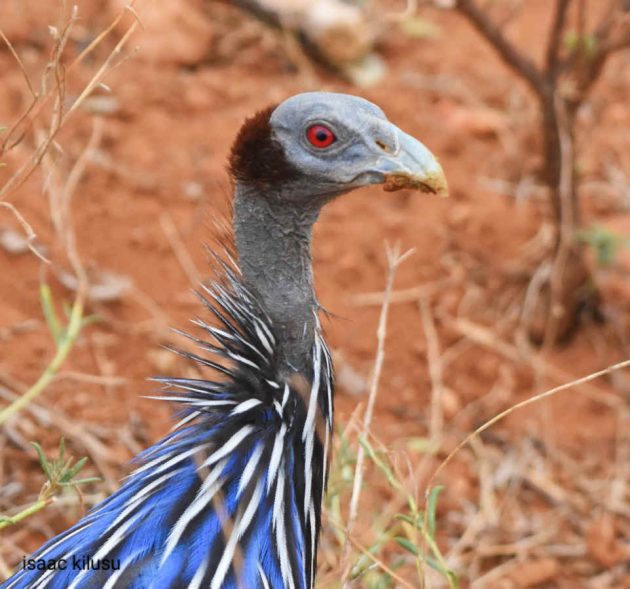
Can you outline at least one typical birdwatching trip in your area? Please briefly describe the locations, the key birds, and the approximate duration of such a trip
A Typical trip will be 14 14-day best of northern Tanzania birding tour:
- Day 1: Arrival and bird Arusha, depending on your time of arrival
- Day 2: Full day Arusha Np -Arusha np is characterized by a mixed habitat of grasslands, lush forest, marshes and lakes where lots of birds abound, here we will search for Trilling, Siffling, Winding, Rattling and Singing Cisticolas, Abbot’s, Kenrick’s and Waller’s starlings, Narina and Bar-tailed Trogon, Crowned and Ayre’s Hawk-eagles
- Day 3: Transit to the Serengetis with a bird stop on the way and visit Olduvai Gorge Museum, the cradle of mankind. At the museum grounds, there are birds such as Spotted Thicknee, Black Bishop, White-bellied Canary, Mocking Cliff Chat, Taita, Fiscal, and Capped Wheatear. On our way to the Serengeti past Ngorongoro conservation area, we might pick Dark Chanting Goshawk, Greater Kestrel, and Cape Crow. Night in a camp or lodge in the central Serengeti
- Day 4: Full day in Central Serengeti (Serengetis is mainly vast open plains and acacia woodlands) for the endemic Tanzania Redbilled, Grey-breasted Spurfowl and Fischers Lovebirds, near-endemics such as Red-throated Tit, Usambiro Barbet, Hildebrandt’s Starling and Kenya Sparrow. Night in Central Serengeti
- Day 5: Drive to Western Serengeti birding all the way to Speke’s Bay Lodge: The habitat is very similar to that of the Lake Victoria biome, large acacia xanthophloea woodlands and river valleys which host birds such as Tabora Cisticola, Maasai Apalis, Grey-crested Helmet-shrike, Black-headed Gonolek, Double-toothed Barbet, and more. Night at Speke’s Bay Lodge
- Day 6: Full day at Speke’s Bay Lodge, Lake Victoria. Here we will bird for species which are found on this restricted biome, such as Carruthers Cisticola, Papyrus Gonolek, Red-chested Sunbird, Blue-headed Coucal, Eastern Grey Plantain Eater, Slender-billed Weaver, Black-headed Weaver, Angola Swallow, and more. -Night at Speke’s Bay Lodge
- Day 7: Transit to Ndutu Plains via western, central, eastern, and some parts of southern Serengeti Plains for various ground birds such as Plain-backed Pipit, Southern Ground Hornbill, various Larks, Coursers, and Bustards, Secretarybird, etc. Night at Ndutu Safari Lodge
- Day 8: Half day in Ndutu Plains and overnight at the Ngorongoro Crater Rim. In these plains, we will continue our search for ground birds, and the nearby woodlands will produce birds such as Superb, Rüppell’s, and Wattled Starlings, Vitelline Masked Weaver, Swahili Sparrow, and Black-lored Babbler. Night in the Ngorongoro Highlands
- Day 9: Ngorongoro Crater birding – We will bird on the crater floor for Gulls, Sandpipers, Terns, and various Ducks and Teal such as Yellow-billed Duck, Hottentot Teal, Cape and Red-billed Teal, African Rail, Lesser Swamp Warbler, Lynes’s Cisticola, Ant-eating Chat, Rosy-throated Longclaw, Jackson’s Widowbird, and Red-cowled Widowbird. Night in Karatu Town
- Day 10: Ngorongoro Highlands at Endoro Cave Trail – In this lush forest, we will look for Mbulu White-eye, Brown-headed Apalis, Schalow’s Turaco, Grey-capped Warbler, Tacazze, Golden-winged, Green-headed, and Eastern Double-collared Sunbirds, African Broadbill, and more. We will then transfer to the mighty Tarangire NP for the night. Night in Tarangire
- Days 11 and 12: Full days in Tarangire NP. We will explore the Small Serengeti Plains, the Tarangire River, and Silale Swamp for birds such as the endemic Yellow-collared Lovebird, Ashy Starling, and Emin’s Barbet. Areas around Silale Swamp host African Swamphen, Rufous-bellied Heron, and Croaking Cisticola. Night at Tarangire Safari Lodge
- Day 13: Lark Plains and Oldonyo Sambu – We will bird for the rare Larks in the Lark Plains, such as the endemic and rare Beesley’s Lark, the near-endemic Short-tailed Lark, and Short-toed Lark. The nearby woodlands host White-headed Mousebird, Pygmy Batis, Ashy Cisticola, Banded Parisoma, Bare-eyed Thrush, and more. Night in Arusha
- Day 14: Mererani Maasai Steppes and Shambalai Swamp, then drop-off at the airport. We will bird for species restricted to the Maasai–Somali arid zones such as Golden-breasted Starling, Somali Bunting, Somali Tit, Pringle’s Puffback, Black-capped Social Weaver, Moorhen, Terns, and various Whydahs. In the evening, we will drive to the airport for drop-off.
Village Weaver
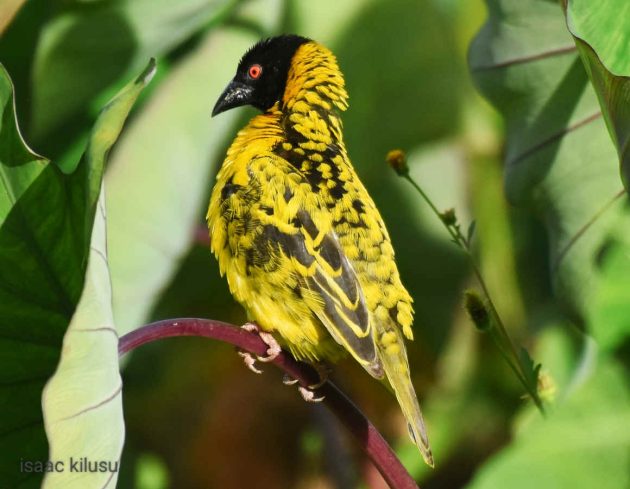
What other suggestions can you give to birders interested in your area?
For birders who would like to see birds in their full, vibrant breeding plumages, especially the weavers, bishops, whydahs, and widowbirds, the best time is to come from November to late June. If they want to visit the southern highlands of Tanzania, it is from June to December. But if you want to combine birding with a big game tour, you can come from June to late October. Birders should also bring warm clothing, hiking boots, insect repellent, and sunscreen lotion. The currencies widely used here are Tsh and USD,.ATMs are available in major towns, and you can only withdraw Tshs
If any readers of 10,000 Birds are interested in birding with you, how can they best contact you?
You can reach me at isaackilusu45@gmail.com. or WhatsApp +255786665746
Superb Starling
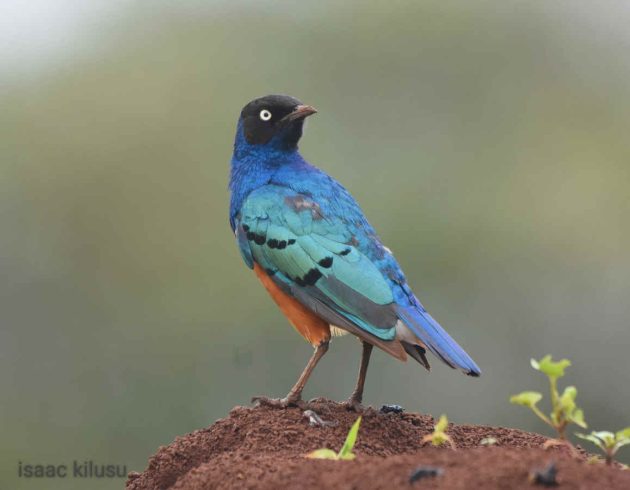
Is there anything else you would like to share with the readers of 10,000 Birds?
If they want to read more about my profile and reviews from previous guests is here https://www.orniverse.com/guide/282/isaac-kilusu


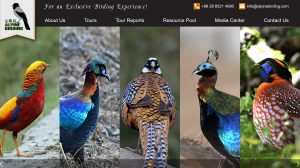
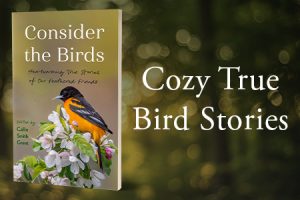

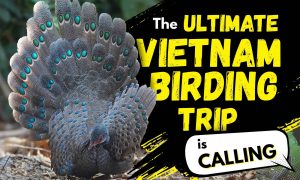

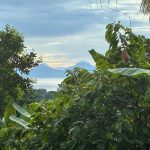
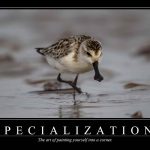
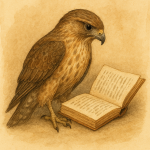
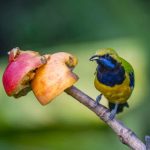
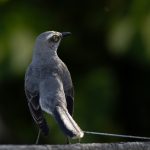
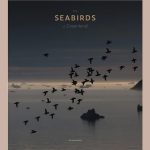
Isaac is one of the best guides I have had the pleasure of birding with. His field skills are excellent, particularly his ear for calls and song; and his depth of knowledge about east African species status and distribution is special. He also pays attention to the details of guiding, like client interests and comfort, and is always ready to just slow down and enjoy the moment.
Isaac is truly a knowledgeable, professional, fun, insightful and helpful bird guide. His infectious enthusiasm and astute knowlege is a pleasure to share in!